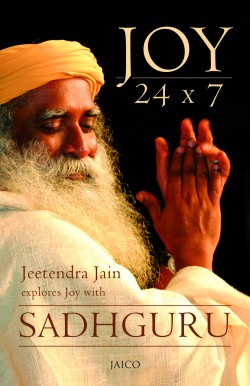
Many people have found themselves deeply troubled by the seemingly constant conflict around the world, wondering if we as a species can ever find our way out of these heartbreaking cycles of destruction. In light of all this conflict, some might wonder whether or not it is even realistically possible for human beings to live peacefully. If a peaceful world is possible, how might we work to bring it about? What steps might each of us take to create the kind of fundamental change that results in a world free of mass conflict?
Earlier in March, when asked about the Ukrainian conflict in an interview, Sadhguru responded to a question about why we would consciously choose to go to war:
“See these are very superfluous judgements. But we must understand all this is rooted in our strong sense of identity. And we want our identity to dominate somebody else’s identity. So nationhood is a very strong identity. The identity is is consciously built and encouraged to a point that you’re willing to shed your life for your nation, which is always considered a great virtue right? If I’m willing to shed my life for my nation, I’m also willing to take your life for that. That is a natural process. Whether it is nation, race, religion, caste, creed or even your individuality, if you are unnecessarily identified, you will get into unnecessary levels of friction and conflict.”
Elsewhere, in a talk hosted by Google, Sadhguru similarly discussed how strong identities inevitably lead to clashes:
“All these identities, being identified with the color of your skin, with whatever nonsense you believe in, and nationality- just a cloth, a flag-people will stand there and tears will come to them. Isn’t it? Just look at that. It really amazes me. On one level it’s beautiful, on another level, it’s super ugly that you get identified with all these kinds of things. People can get identified with a symbol, with a word, with just about anything, alright? So you’re trying to create some artificial boundary of your own. Once you create this boundary, and you have one boundary and I have another boundary, when they meet, we clash.”
Given the title of the Google talk, “Developing an Inclusive Consciousness,” the interviewer and audience alike ask Sadhguru for further elaboration on these topics. He then goes on to discuss how to create a culture of inclusiveness, suggesting that the world today fundamentally needs inclusive individuals and leaders who create a culture of inclusiveness.
Working to define an “inclusive consciousness” and describe how it relates to yoga, Sadhguru says:
“Now, yoga means union. Union does not mean you cause the union. Anyway, it is happening as one. You allowed yourself to experience it. That means the walls of self-preservation, you loosened up a little bit. That’s all. Why you want somebody close to you? Why you want a loved one in your life is: somewhere, you want to loosen the walls of self-preservation, where you don’t have to worry about protecting yourself. Suddenly you feel one with them. And once you feel one with them, in some way, you want to be in touch with them. Because you are trying to loosen up your sensory body in such a way that you can experience that which is not a part of you as a part of yourself. Now, this need not be limited to one person, or anything like that. This need not be biologically connected. If you can sit here with your life energies at its peak of exuberance, you will experience the whole universe as yourself. Then we say you’re a yogi.”
Further on, he continues: “See, this is the beauty of our existence. In this existence, in this cosmos, we are not even a speck of dust; that small we are. But still, creation has given us an individuality, an individual nature, that we can experience these things. But countless numbers of people who lived on this planet before you and me came, where are they? They’re all topsoil. They have become part of the Earth, isn’t it? So if you get it from me today, you can transform your life. That really, everything is a part of you and you are a part of everything—not as a thought, but experientially—if you can experience everything around you as you experience the five, ten fingers of your hands, then you will see: life becomes tremendously beautiful. Otherwise, anyway, one day you’ll get it from the maggots, but it’ll be a bit too late [of a] lesson. But everybody will get it one day, isn’t it? Hello? When people bury us, we’re going to get the point that we are part of the Earth. Right now, if we get it, we can live sensibly.”
“So, this must come from an experience. If you come from a thought, again, you’re thinking: how is inclusiveness and individuality existing at the same time? That is the beauty of this existence. It is the filth which has become the flower, isn’t it? Yes or no? Hm? It is the filth which has become the flower. In your mind, filth is different, flower is different. But in existence, filth and flower are [the] same. They’re not different! Just different ways of existing.”
Attend a free webinar “Meditation for Beginners” to explore a simple yet powerful 12-18 minutes meditation that can bring clarity, health and joy. Visit www.innerengineering.com/freeyoga




